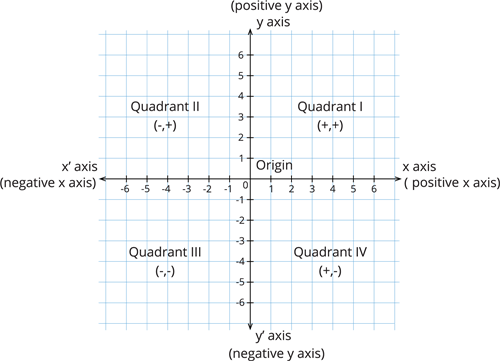
PUMPA - SMART LEARNING
எங்கள் ஆசிரியர்களுடன் 1-ஆன்-1 ஆலோசனை நேரத்தைப் பெறுங்கள். டாப்பர் ஆவதற்கு நாங்கள் பயிற்சி அளிப்போம்
Book Free DemoQuadrants:
- The x-axes and y-axes divided the cartesian plane into four infinite regions with equal distance from the origin and bordered by two axes.
- These are called quadrants. Quadrants divide the cartesian plane into 4 equal parts. They are usually numbered in anticlockwise direction starting from the region bounded by positive x and y-axis (that is OX).
Quadrant I:
- Any point located in quadrant I will have a positive number in the x-axis and y-axis.
- It can be represented as ( x, y), where x and y represent the distance of a point from the origin horizontally and vertically.
Example:
(2,3), (6,10), (9,12)
Quadrant II:
- Any point located in quadrant II will have a negative number in the x-axis and positive number in y-axis.
- It can be represented as (-x, y), where x and y represent the distance of the point from the origin horizontally and vertically.
Example:
(-3,6), (-2,5), (-15,12)
Quadrant III:
- Any point located in quadrant III will have a negative number in the x-axis and y-axis.
- It can be represented as ( -x, -y), where x and y represent the distance of the point from the origin horizontally and vertically.
Example:
(-5,-6), (-2,-1), (-8,-10)
Quadrant IV:
- Any point located in quadrant IV will have a positive number in the x-axis and negative number in y-axis.
- It can be represented as (x, -y), where x and y represent the distance of the point from the origin horizontally and vertically.
Example:
(1,-3), (3, -4), (7,-1)
